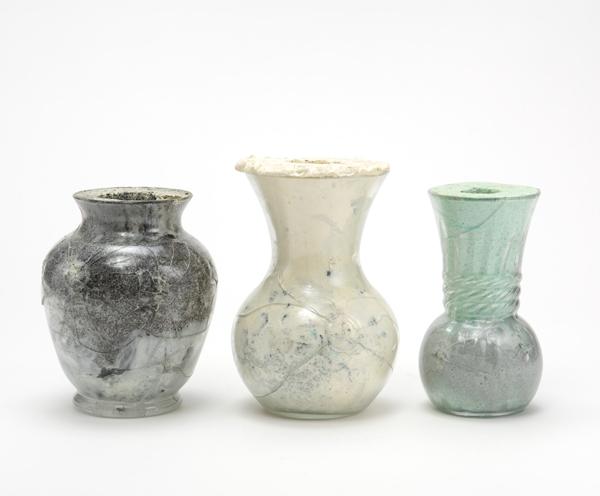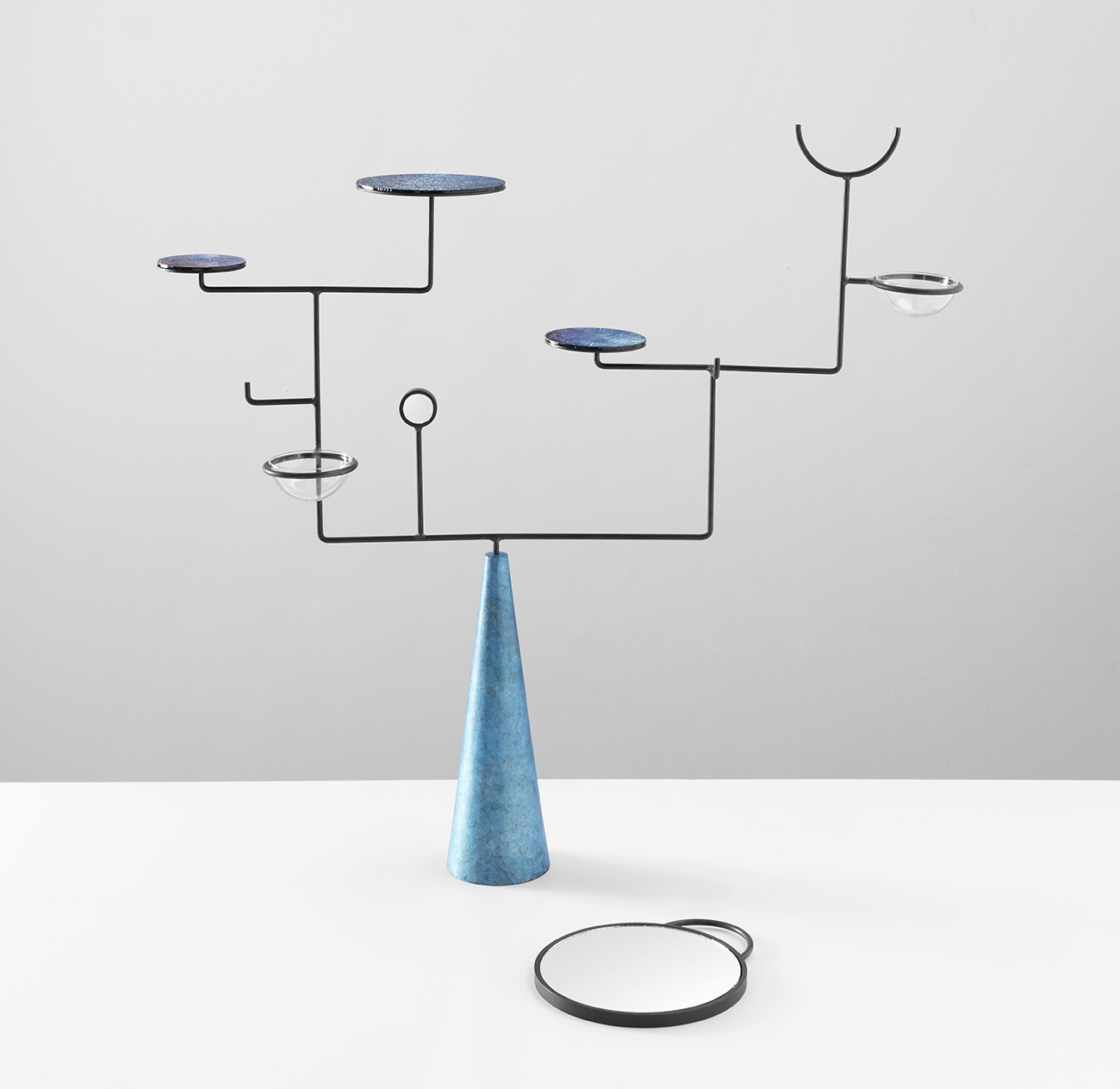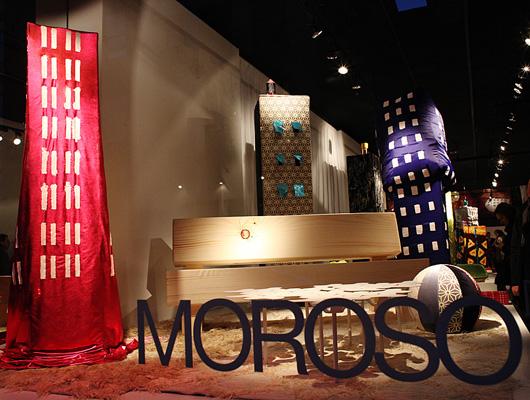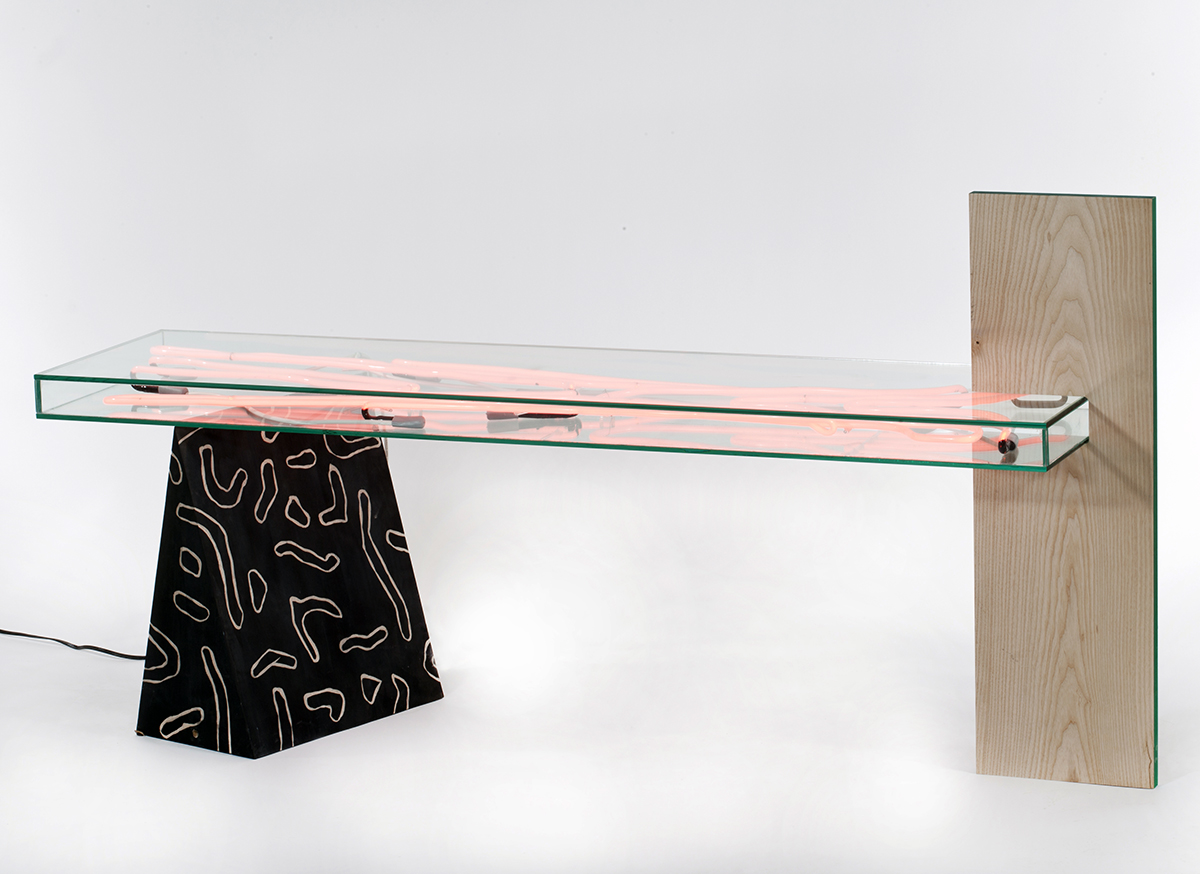
10.24.13
Up and Coming
24-Year-Old Misha Kahn May End Up Being Our Biggest Discovery Yet
The first time we met Misha Kahn, he was slapping gold metallic wallpaper with long-lashed googly eyes onto the walls of a tiny room we’d given to four RISD students at our 2011 Noho Design District showcase. We were never sure quite what to make of the wallpaper — was it technically even “furniture design,” or was it more a piece of Surrealist art? — but we knew from first sight that we loved it. Which is pretty much how we’ve felt about all of the work that’s followed from the Brooklyn-based, Duluth, Minnesota–born designer’s studio, whether it’s a pink bench made from layers of resin and trash, a series of tables that resemble Froebel blocks on acid, or sewn cement pieces that look like the work of a woozy Jeff Koons.
“My process usually starts with a pretty rigid vision, but because I’m manufacturing my own things, something always happens that throws everything off,” Kahn explains. “I actually imagine my designs being these insanely crisp Pop-Art objects. I know they’ll never end up that way but that’s the fun in making them. With the sewn cement pieces, for example, I was just too cheap to buy Plexiglas so I was stretching vinyl over plywood to simulate that finish and there ended up being ripples. In my head they were these rigid geometric shapes but then there were all these kinks and silly surface textures.”
“Silly” is one of Kahn’s favorite words to throw around, and while there is comedy in much of his work — one of his first projects at RISD was a “giant waffle table” — there is also a seriousness of purpose and the infusion of narrative that comes from experience. That might sound ridiculous considering Kahn won’t even be turning 30 any time soon, but he’s crammed as many experiences — both here and abroad — as he can into his short career. There was the year in Belgium when he was 16, travel in the Middle East, a Fulbright scholarship that brought him to Tel Aviv to study shoe design under a Bezalel master, and an internship at a Vietnamese factory where he ended up assisting ex-Moschino creative director Vincent Darré in his eccentric attempts at furniture. Most recently, there was a fellowship at the Creative Glass Center of America in New Jersey, where he made the tinfoil, glass, and resin pieces that debuted tonight at a joint exhibition with his frequent co-conspirator Katie Stout — because oh yeah, did we mention that all of his recent work had been acquired by New York’s prestigious Johnson Trading Gallery?
If Kahn has achieved a certain measure of success in a small amount of time, it’s because he thinks big, both about individual pieces and his career in general. Even in answering the questions for this interview, he would frequently reference his desire to move into the realm of living rooms, log cabins, or palaces (with serious Archizoom vibes). Having such an expanded sense of the future can be good but it can also be a curse, Kahn says. “Like this year, so many exciting things have happened and I’m still like wait, what about the department store? When do I get to open that? There’s always something bigger on the horizon.”
First thing you ever made?
“When I was five, I made everyone in my extended family tiny pants that hold pens and turned them into necklaces. They were called pen pants. I also made tons and tons of Claymation films, mostly about the adventures of an otter.”
If you had an unlimited budget for a single piece, what would you make?
“I would love to make a whole neon wood grain floor — or a marbled marble palace. Or make a whole log cabin out of trash trees.”
If you weren’t a designer, what would you be?
“A plastic surgeon! I could still make the switch in 10 years.”
Favorite Google Image search:
“I think my first step is buying a computer.”
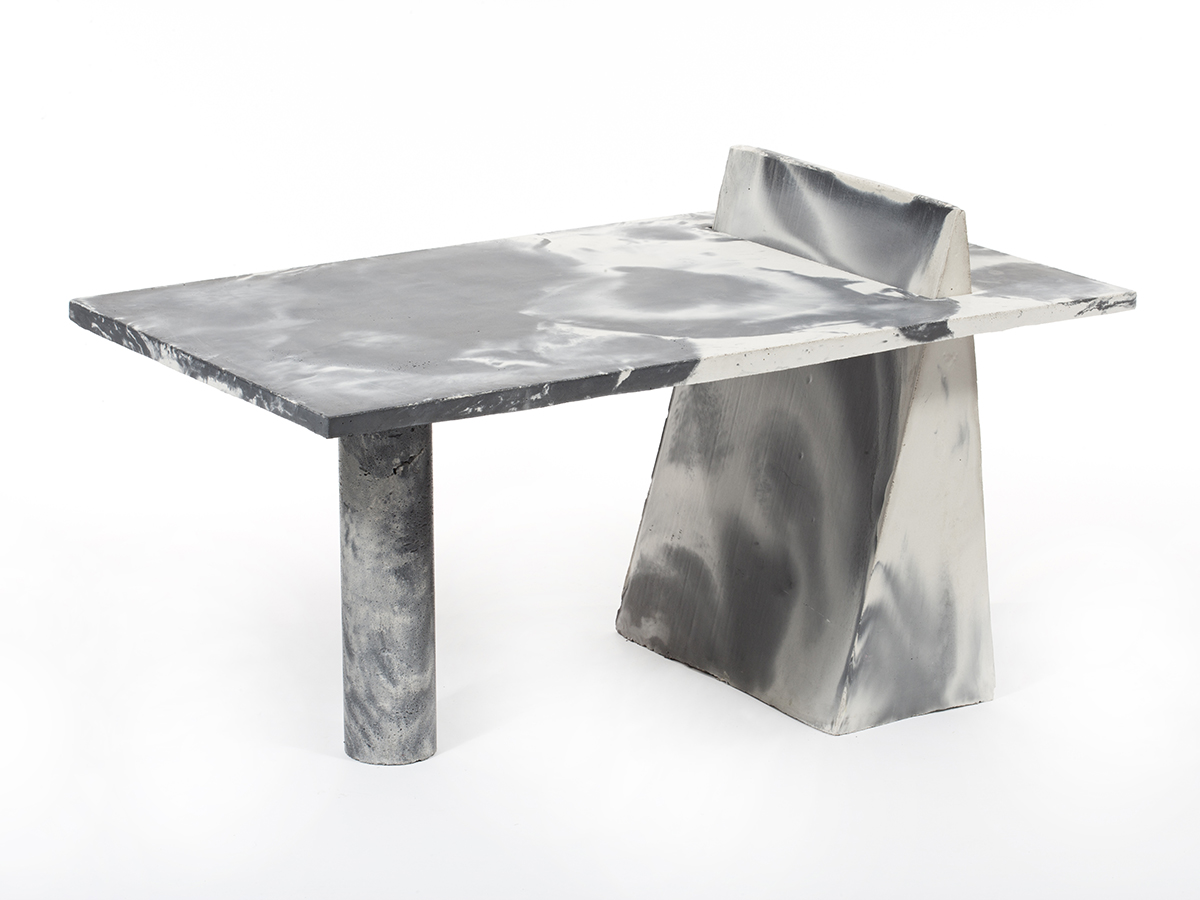
“Originally it was based on some vintage building blocks called Geometric Solids. It’s an old Milton Bradley set I bought at a thrift store in Melville, New Jersey. It’s an easy way to look at how some shapes might look together.”
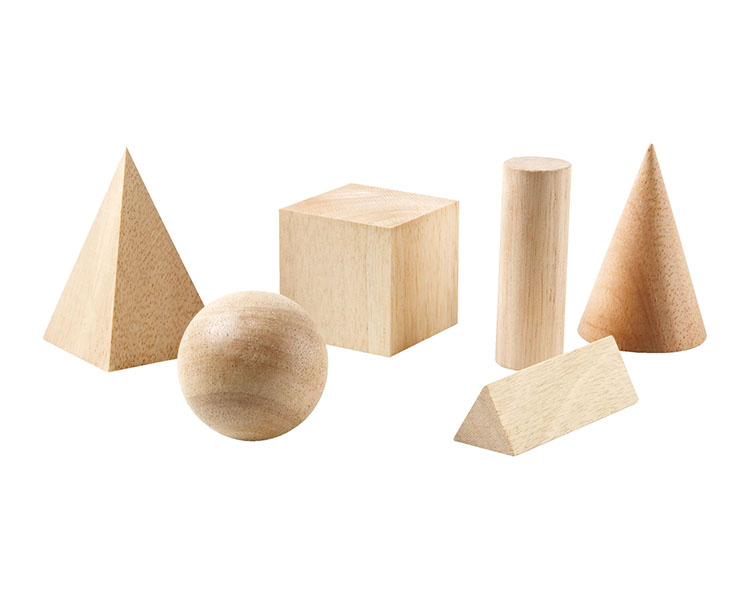
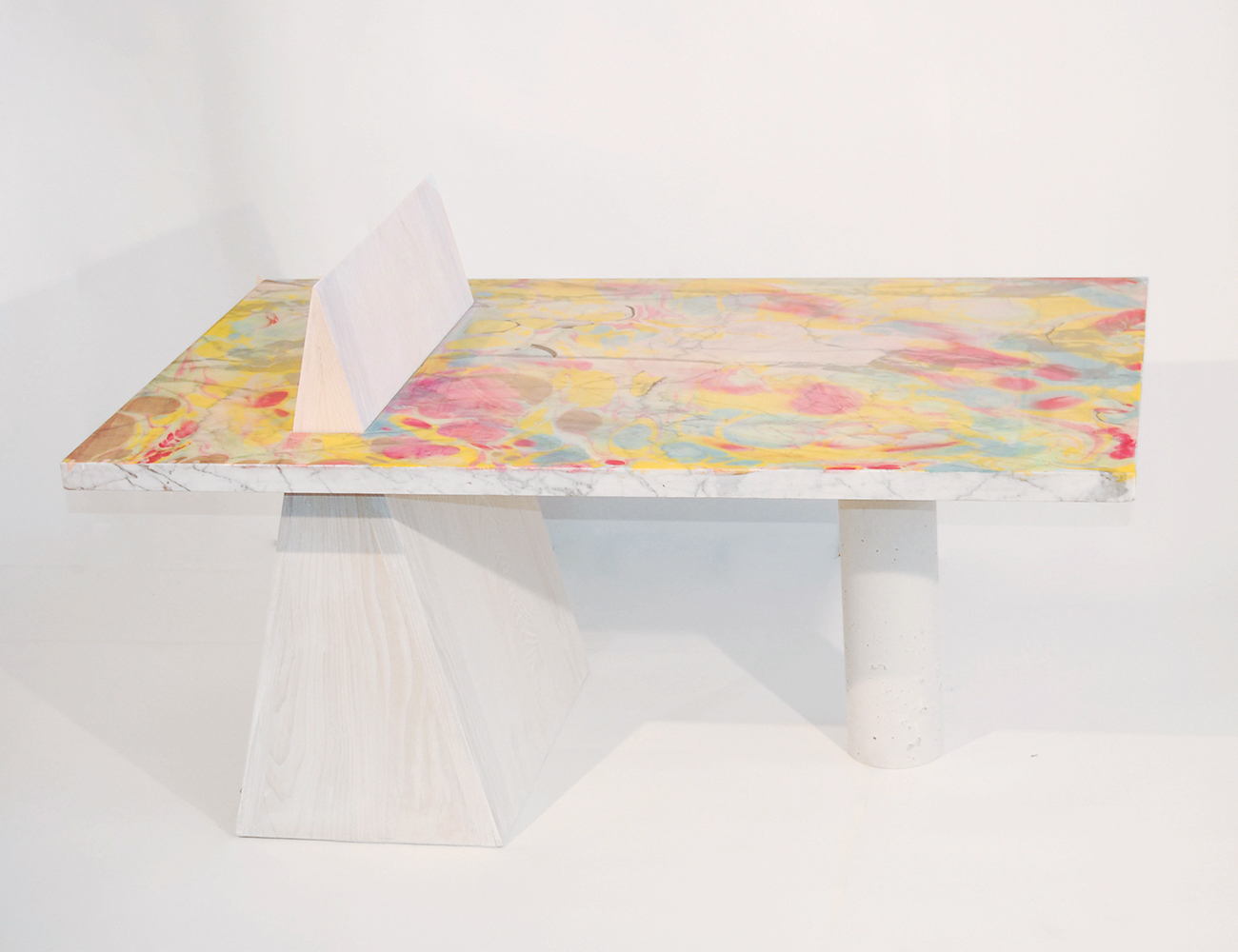

“I find a lot of design very formulaic. Take a ‘concept’ (which usually means simple visual inspiration) and then water it down. For me, it’s always been the opposite. I try and let anything that’s happening in my life into the work. We have this idea that design shouldn’t be too complex, but the objects I love are always very difficult to place. Lately I’ve been thinking about how there’s no longer separation between any kind of spaces or thoughts. I think that kind of haphazardness needs to show up in design. In the studio I call it the wild card; for instance, the wedge on the neon table is totally the wild card. The surface is very Memphis, but gouged into an ebonized wood chunk. They feel right together, but it’s because we’re getting so accustomed to this phenomena.”
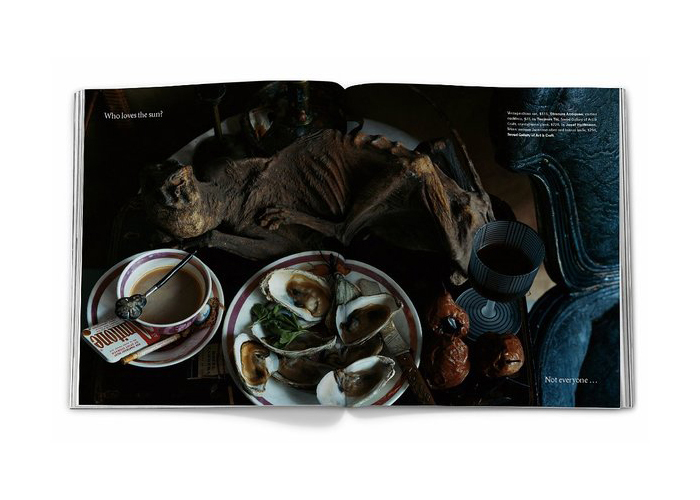
“Right now, I’ve been working for this amazing still-life stylist, Molly Findlay. It’s a dream job to just gather strange things, and I have learned about so many resources in the city. It’s also interesting watching someone who’s so adept at making things look good together compositionally, and nice to spend time thinking about how things will look together. In the RISD mentality of working, it’s about how will this one object look all by itself in a white room. You can make really nice work that way, but for me, I’ve always been interested in holistic interiors — making things that are interesting in relation to something else. It’s kind of like how a Lindsay Adelman will look good in a bohemian apartment or a fancy loft. That to me feels like a brilliant styling conundrum — how do you find this thing that looks good everywhere without being complacent. I try to think about that in regards to my own work.”
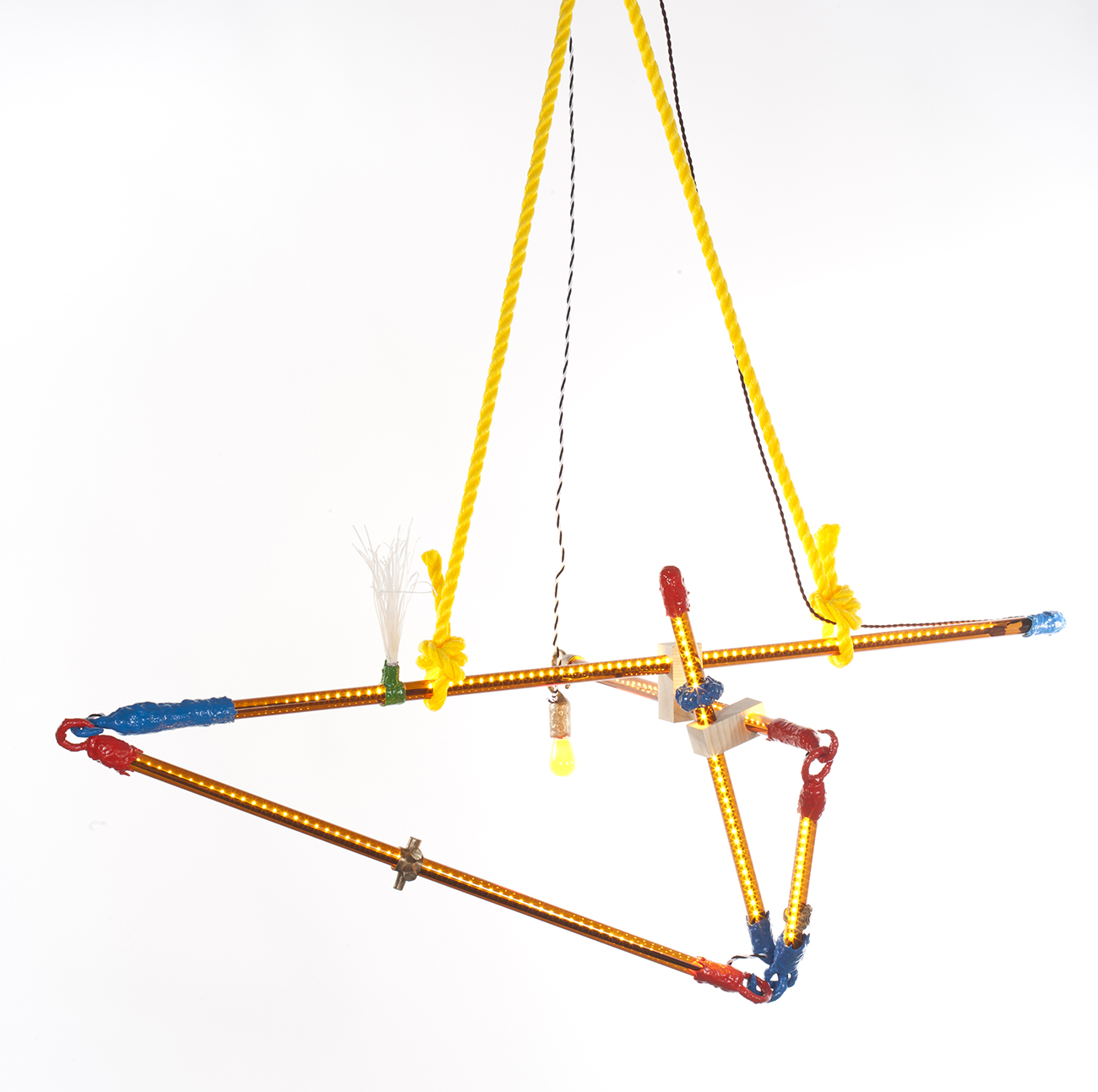
“My mom writes kids’ books, and my dad is an architect. I build things that are about stories; I split the difference. For instance, the Hotel Ahn-Nom lights I did with Chris Wolston: Chris came to visit me in Vietnam, and the hotel was next to factory. It was very un-Vietnamese, cement and glass in the middle of all this nonsense. The light was about the experience you have when you’re in these countries and they’re modernizing in some ways but not in others. In the light, there’s glass and LEDS but the hooks are pinched resin, and then there’s rope and all these charms. Done ‘correctly,’ that light should be a Bec Brittain piece. But the whole point is to take that idea to another place.”
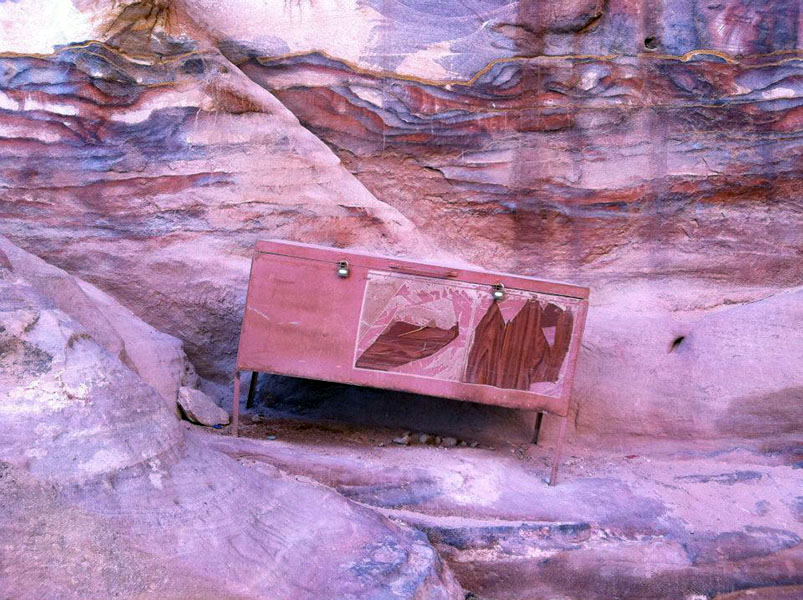
“Really, really bright colors that have faded in the sun and collected dust. Kind of like this office desk, which I found on a hike Petra in Jordan. It was beautiful how this thing had weathered in a similar way to the rock, with the cheapest, shittiest thing acquiring the same tone in a year.”
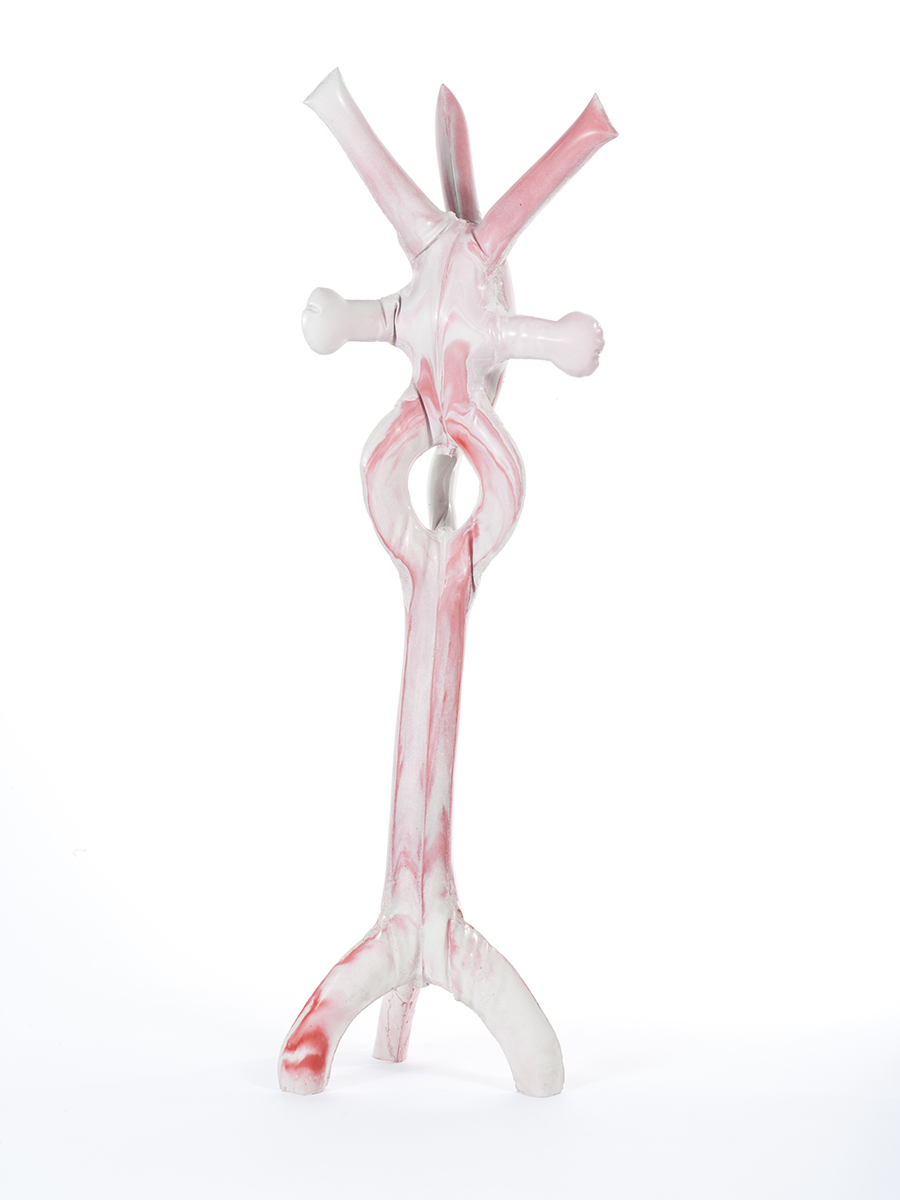
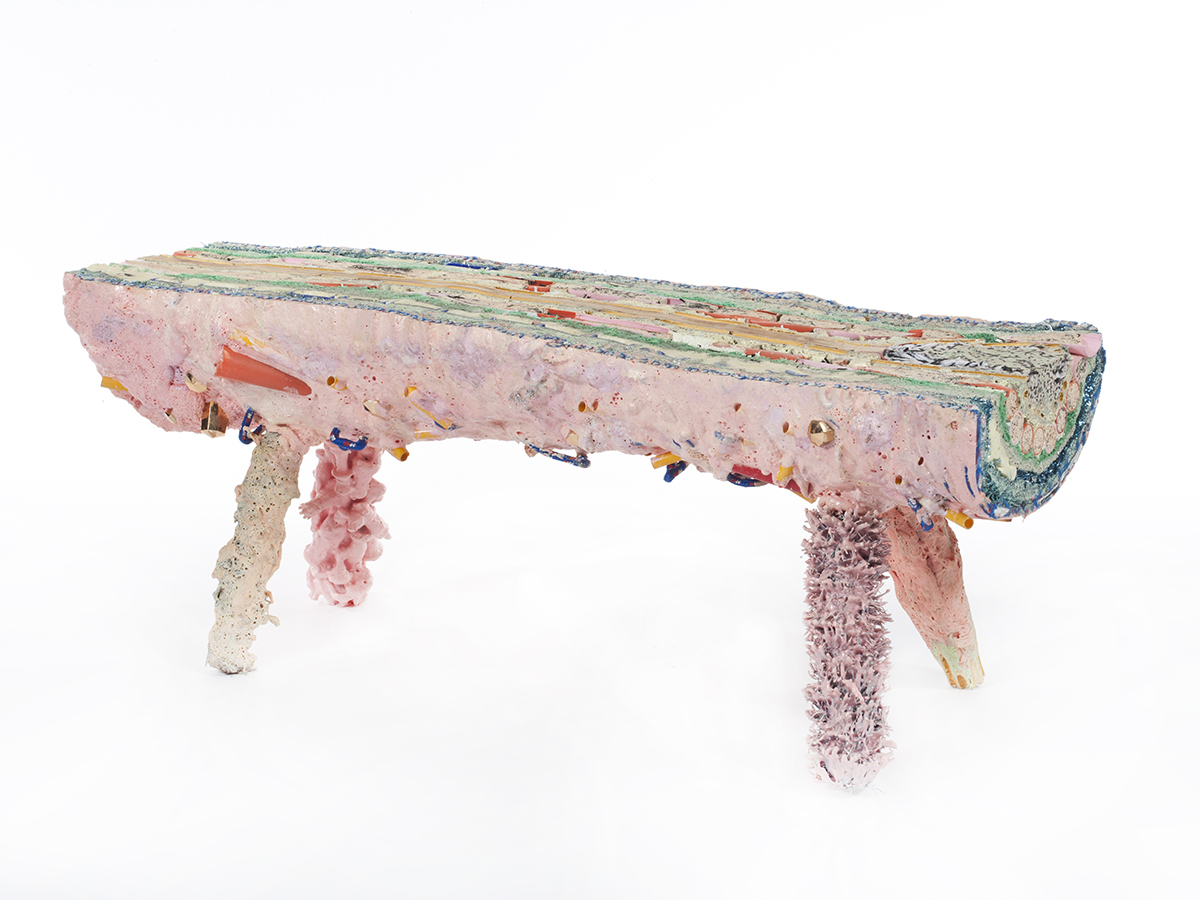
“Right now, I’m doing more stuff with urethane resin. I can’t get enough. It’s so versatile and feels like it wants to do what you want it to do. But at the end of the day I think you have to just keep mixing, I can’t say everything with one material.” (Above: Kahn’s Pig Bench, which was made with resin and trash. “I was trying to simulate wood with garbage,” Kahn says. “In my head, I dreamed of making a whole log cabin with this, a Unabomber-esque place with all of this vernacular furniture but it all has to be built out of layers of trash.”)

“My dream installation would be hanging a living room in the center of the Guggenheim. Maybe have some cats that hang out on it too.”
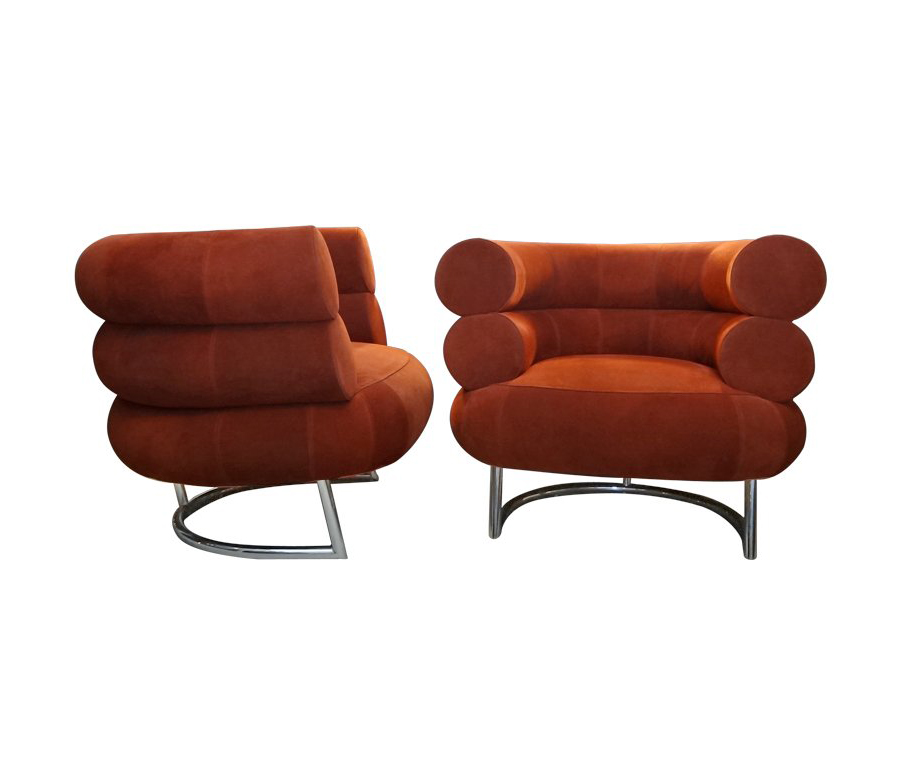
“Can I make a list like this is for a dating website?! My favorite contemporary artist is probably Wim Delvoye; my favorite old option is Henri Rousseau. My favorite designer is trickier. I like a lot of Atelier Van Lieshout. I would really liked to have met Eileen Gray (whose Bibendum chair is shown here). And I can’t not mention Gwen Stefani. I think her high/low/DIY/global-blend sensibility has had a big effect on me.”
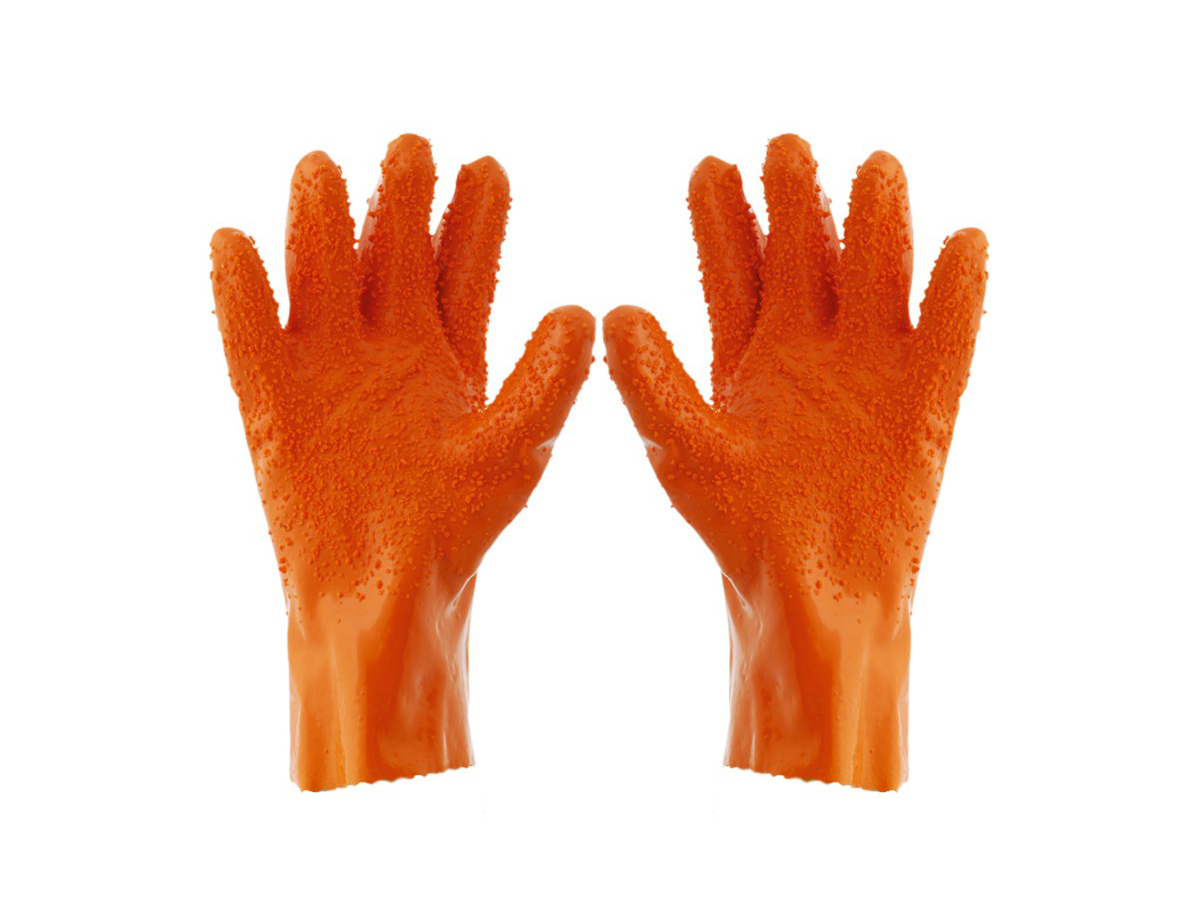
“Potato peeling gloves! I don’t actually own them since I would be too afraid a burglar would put them on and use them on my face but I think they are the most genius invention of our time.”
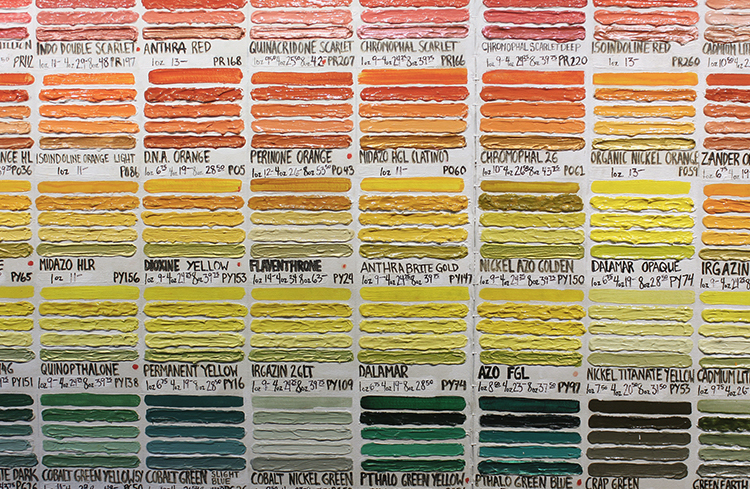
“I love going into Guerra, a paint shop in the East Village, and looking at the color wall. I also like going into dollar stores all over the city and finding strange plastic objects to reference.”
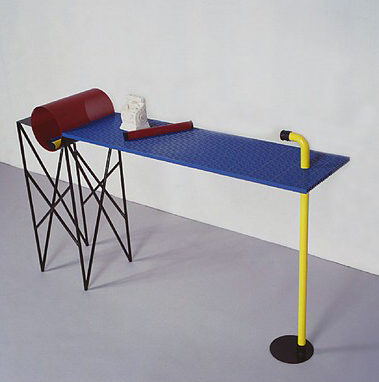
“David Zelman’s Pheln table.”
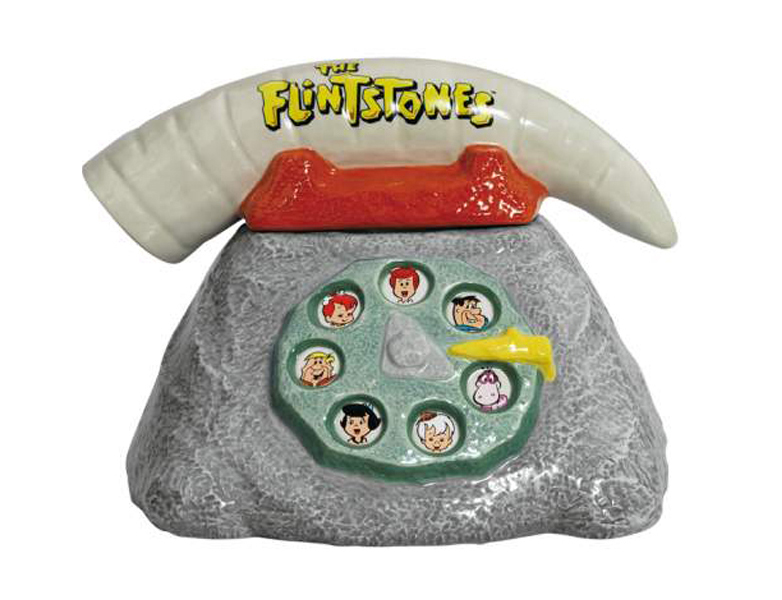
“Flintstones phone / cookie jar.”
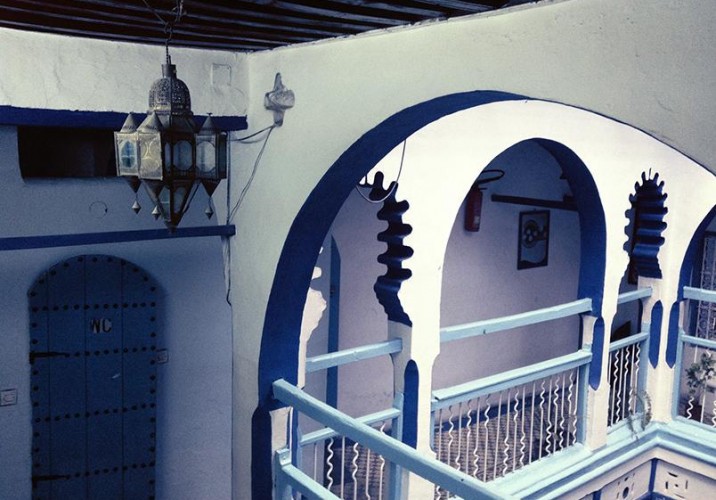
“I’m most inspired by developing countries where people get really into decorating. In the slums of Vietnam where I worked there would be old sewer tubes turned into houses with tin foil ornaments. In Israel, Palestine, and Jordan it would be these dusty cement boxes with glittery drapes, plastic chandeliers, and printed animal rugs. And best of all these arches in Morocco! I’m very inspired by resourcefulness when it comes to décor. I think being ingenuitive in terms of more functional goals is great, but when people turn this into a purely decorative end it can be so amazing. In the States it happens to some degree with our love of flea markets, but we don’t usually take it far enough.”
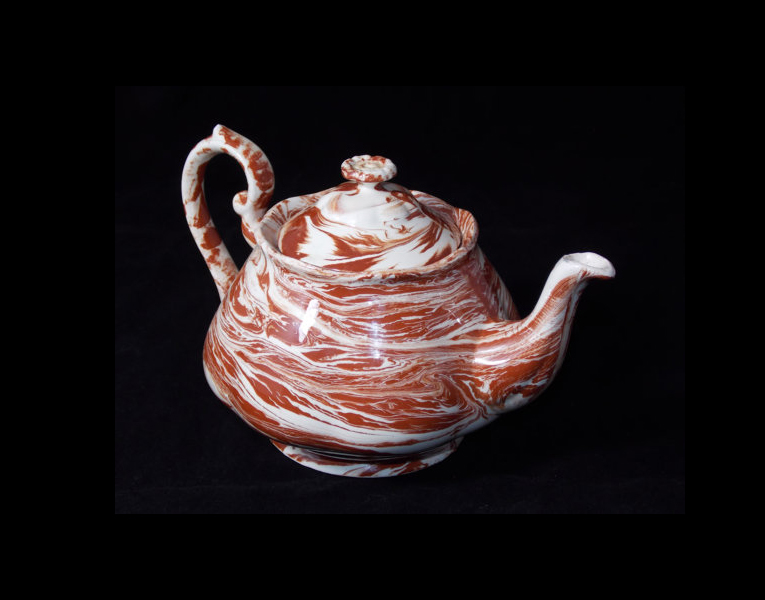
“I’m sort of a hoarder, but I’ve moved a lot so I don’t put too much importance on keeping track of things. I collect mutant candies. In Israel, I collected trash. I think I shipped two boxes of trash home, so that’s sort of insane. My studiomate Chris Wolston is an obsessive collector, and we have a lot of shared likes. We both are obsessed with Alaska Clay objects right now.”
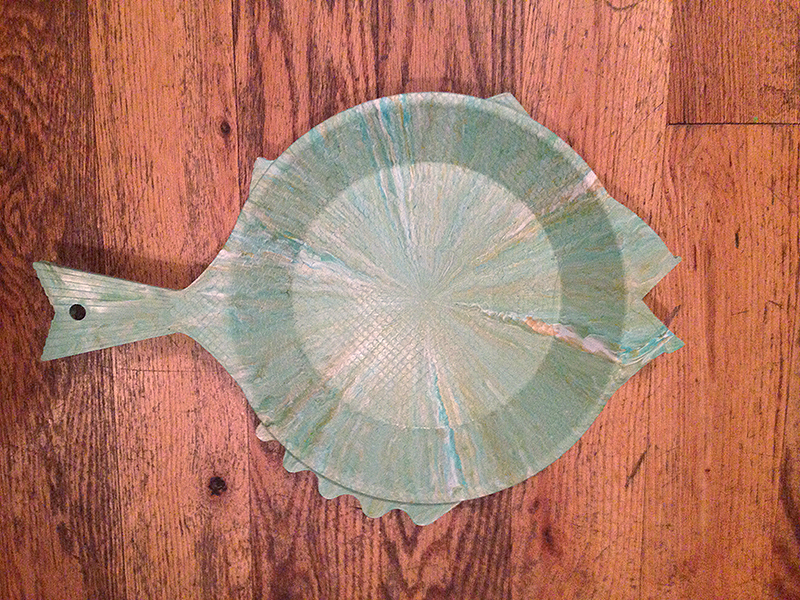
“I buy so many strange things for work that I’m not doing it recreationally lately. I bought these fish plates, though — they have scales on them, are green, and marbled. It was at my favorite vintage store, B Squad in Minneapolis.”
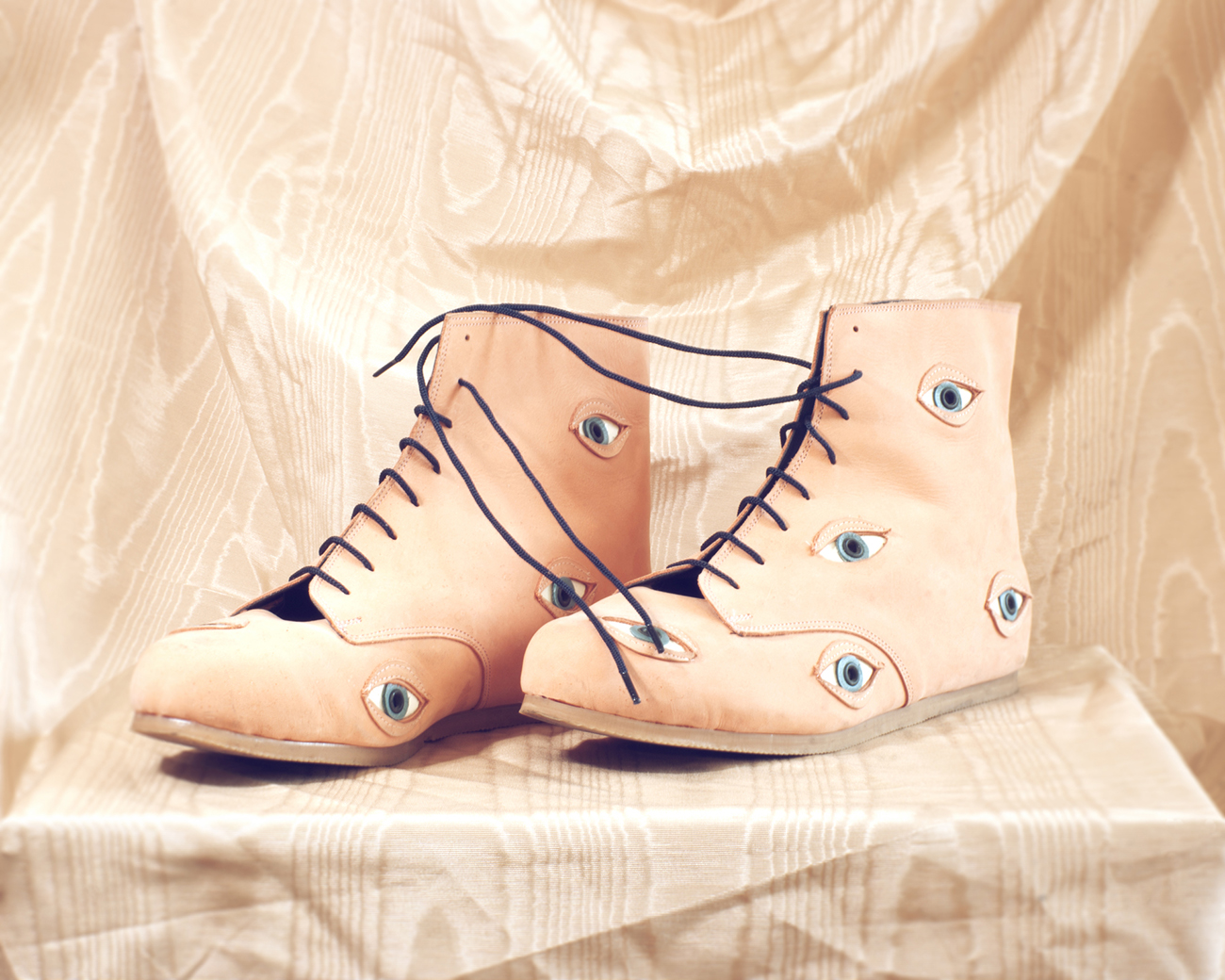
“I think I most identify with whatever movement is happening right now! Some economical restrictions, some post-Memphis silliness, some eco tinges, and it’s getting progressively blurrier between art and design — all things that are pushing design in a really promising direction.” Pictured above: Shoes Kahn designed while on a Fulbright in Tel Aviv.
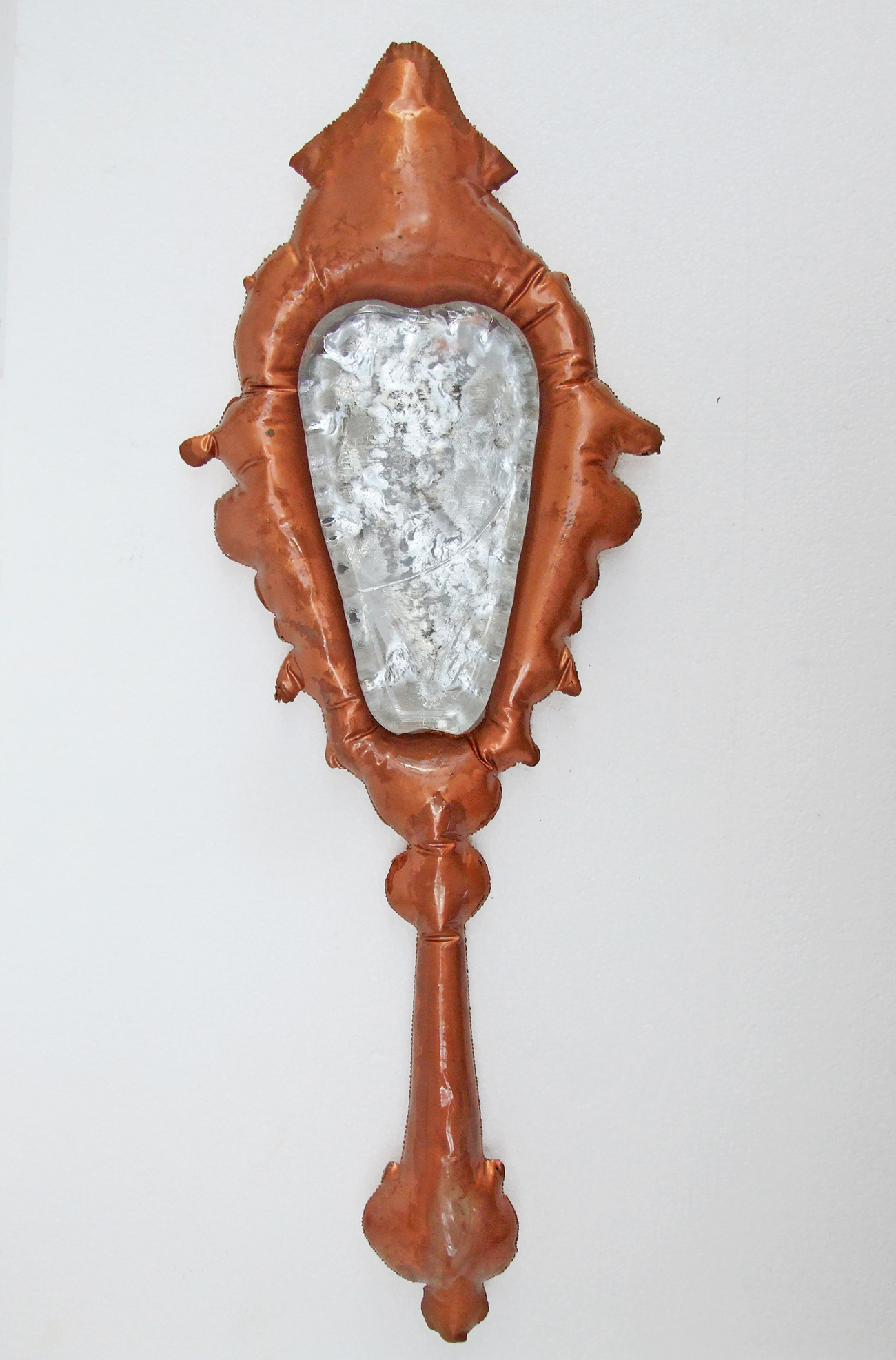
“Preparing for my opening at Johnson Trading Gallery! For the show, I created these mirrors using a process of slip-casting resin inside of inflatable forms, and then ladling hot glass over tinfoil. The mirrors offer an obscured view of yourself, framed in bright, bloated plastic, and they’re about our relationship with the American strip mall. It’s simultaneously this very homogenous big-box experience with pockets of cheap real estate for authentic immigrant influences. This is the setting where most Americans go to try and satiate their material fantasies. The way a New Yorker would view this place is as a savage wasteland for tasteless bottom-feeders — perhaps an ironic view since this is in most of our roots.”
